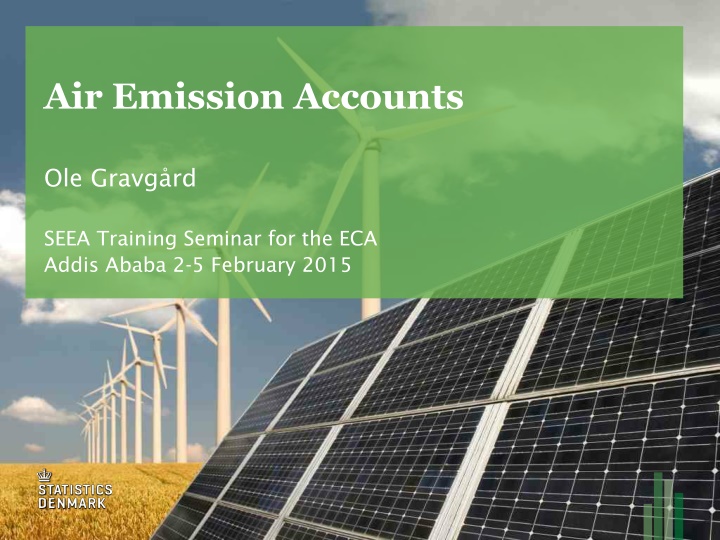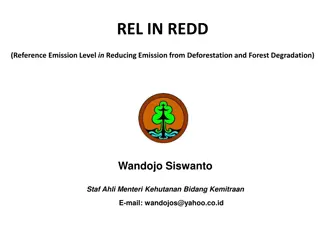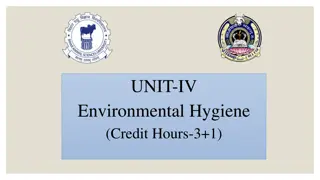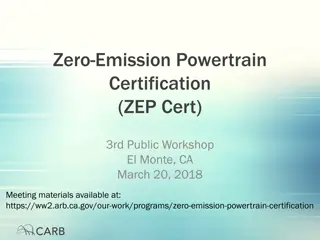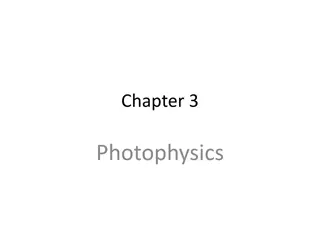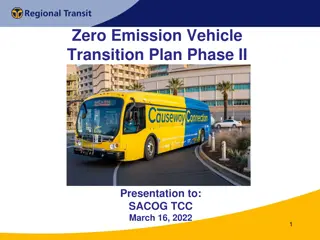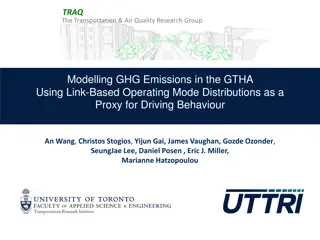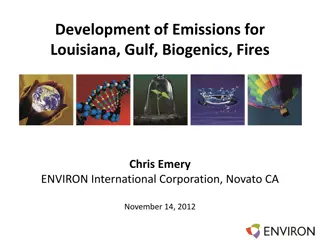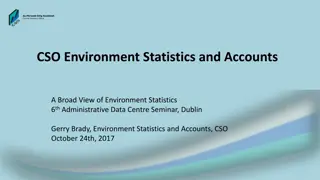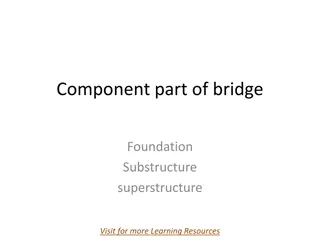Air Emission Accounts and Bridge Tables
Flows of air emissions, including gaseous and particulate substances released into the atmosphere, are recorded in Air Emission Accounts following specific guidelines and considerations. Bridge tables play a crucial role in reconciling differences between national economy totals and emission inventories. The scope of the accounts excludes certain emissions and defines methodologies for accurate reporting.
Download Presentation

Please find below an Image/Link to download the presentation.
The content on the website is provided AS IS for your information and personal use only. It may not be sold, licensed, or shared on other websites without obtaining consent from the author.If you encounter any issues during the download, it is possible that the publisher has removed the file from their server.
You are allowed to download the files provided on this website for personal or commercial use, subject to the condition that they are used lawfully. All files are the property of their respective owners.
The content on the website is provided AS IS for your information and personal use only. It may not be sold, licensed, or shared on other websites without obtaining consent from the author.
E N D
Presentation Transcript
Air Emission Accounts Ole Gravg rd SEEA Training Seminar for the ECA Addis Ababa 2-5 February 2015
Flows of air emission Emissions to air are gaseous and particulate substances released to the atmosphere by establishments and households as a result of production, consumption and accumulation processes. CO2, SO2, NOx, CH4, N2O, SF6, NH3, PM10, etc. The SEEA air emissions account records the generation of air emissions by resident economic units and by type of substance. 2
Supply and Use table for Air Emissions Table 3.7 USE SUPPLY 3
Note 1 All actual CO2 emissions should be included in the accounts also CO2 emissions from burning of biomass However, it is recommended that, where possible, carbon dioxide emissions resulting from the burning of fossil fuels should be distinguished from carbon dioxide emissions from biomass. 4
Note 2 Use Residence approach (not Territorial approach) 6
Bridge tables needed The national economy totals of Air Emissions Accounts most likely differ from totals as presented in national emission inventories. These differences are recorded and presented in so- called bridge tables Bridge tables are important for both compilers and users 8
Example bridgetable - Denmark 2012 www.statbank.dk/MRO1 9
Note 3 Flows of air emissions within the environment are not in the scope of the accounts: Transboundary flows of air emissions are excluded from the air emissions accounts Capture of gases by the environment, for example, carbon captured in forests and soil are excluded from the accounts Emissions such as unintended forest and grassland fires and human metabolic processes which are not the direct result of economic production are excluded. 10
Note 4 Secondary emissions (results of processes in the environment) are excluded Flaring and venting of e.g. natural gases are included Emissions from manure collected and spread on agricultural land are included (dissipative use) Leakages from accumulations (durable goods like refrigirators, landfills, etc.) should be recorded as they occur and attributed to the owner of the good at the time of the leakage 11
Implementation of air emissions accounts The compilation of Air Emissions Accounts starts from existing data, namely data on air emissions, energy use and/or other parameters. These existing data need to be manipulated and re- arranged according to the accounting principles of National Accounts. Two general approaches are used: Energy First and Inventory first 12
Two approaches: Inventory first and Energy first Source: Eurostat: Manual for Air Emissions Accounts 13
Inventory first appraoch The inventory first-approach starts from existing national emission inventories (e.g. related to United Nations Framework Convention on Climate Change, cf. IPCC Guidelines for National Greenhouse Gas Inventories It re-arranges those data to a format compatible with National Accounts. 14
Inventory first appraoch Emission inventory Emission accounts 15
Energy first appraoch The energy-first-approach starts from energy statistics/balances which are re-arranged to Energy Accounts from which air emissions are calculated using certain emission factors. 16
Energy first appraoch Energy Accounts The same classifications as used in the SNA From emission Inventories: Emissions not connected to combustion of energy: Emission Factors Specific for each energy product Industrial processes Agriculture Etc. Air Emission Accounts 17
